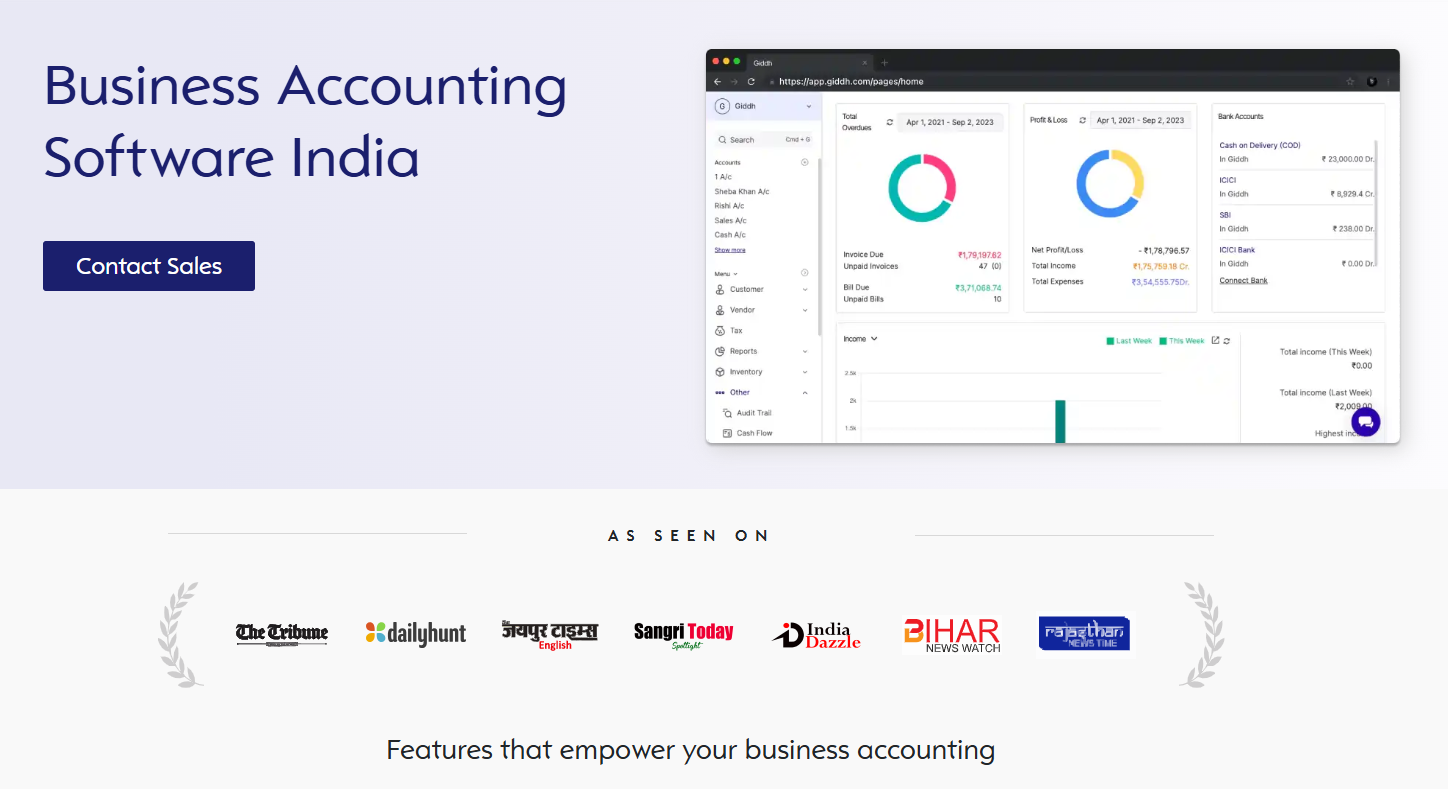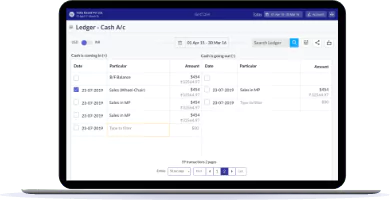Best Multi-Currency Accounting Software for International Finance

TL;DR
- For SMBs expanding globally, the complexity of currency conversions, fluctuating exchange rates, and diverse tax rules pose significant challenges.
- The right multi‑currency accounting software automates conversions, tracks real‑time rates, ensures compliance, and gives you global financial visibility.
- Using multi‑currency accounting tools means fewer errors, faster reporting, and scalable finance operations for international growth.
- If you’re managing multiple currencies and global transactions, ask: “Is our current system built for this scale?” Then consider a platform like Giddh as your solution.
According to recent data, around two‑thirds of small and medium‑sized enterprises (SMEs) operate across more than one country, and many are managing financials in multiple currencies.
This raises a key question: how can finance teams remain accurate and compliant when every transaction could involve currency conversion, fluctuating exchange rates, and cross-border tax regulations?
For those seeking the best multi‑currency accounting software, the answer lies in tools designed for international scale, not just domestic bookkeeping. The right system gives you control, clarity, and consistency across all markets.
What Are The Real Costs Of Managing International Finances Manually?
Many finance managers believe they can stretch their existing accounting software to cover global operations—but the truth is, manual workflows and domestic tools create hidden risks:
Common pain‑points
-
Currency conversion errors: Manually converting invoices, payments or sales across currencies invites mistakes.
-
Delays in financial reporting: Reconciling multi-currency ledgers by hand slows down month-end and decision-making.
-
Difficulty tracking real-time exchange rates: Without automation, finance teams often fall behind market movements.
-
Tax compliance challenges across jurisdictions: Each country has its own VAT, GST, or withholding rules, making manual management cumbersome.
Impact on accuracy and scalability
When you rely on traditional accounting software for international operations, you often face:
-
Increased risk of mis-statement or audit exposure.
-
Decision‑making based on delayed or fragmented data.
-
Scaling issues arise as you add markets and currencies, making manual processes untenable.
For SMBs and the finance professionals within them, these pain points aren’t theoretical—they directly hamper growth velocity, cost control, and financial governance.
What Is Multi-Currency Accounting Software?
Put simply, multi‑currency accounting software for SMEs is an accounting platform designed to handle multiple currencies, countries, and tax rules.
Definition and core purpose
-
A system that automates currency conversions, tracks exchange‑rate movements in real time, and gives consolidated views across currencies.
-
A solution that supports international financial reporting, automatic updates for tax codes, and cross‑border transaction visibility.
-
Designed with international businesses in mind, this accounting software is not just domestically focused but also suitable for global companies.
What makes it different
-
Traditional accounting tools: Built for one currency, one country, domestic tax rules; often require spreadsheets and manual workarounds for global operations.
-
Multi‑currency tools: Native support for multiple currencies and countries, built‑in conversion logic, compliance management, and global reporting dashboards.
Such clarity and automation are essential when your business spans markets or currencies—and when your finance team needs to scale without proportional increases in headcount or risk.
What Benefits Do Multi-Currency Accounting Tools Bring?
Here’s how adopting the best accounting software simplifies international finance management:
Automated currency conversion & exchange rate tracking
-
Updates to exchange rates are automatically imported or pulled in real time.
-
Conversions applied correctly across invoices, payments, and journals without manual entry.
-
Reduced errors in foreign‑currency reporting, fewer reworks and corrections.
Consolidated global financial reports
-
Unified view of your financials across regions and currencies: one dashboard, one truth.
-
Support for decision‑makers (CFOs, finance managers) to see total exposures, profitability per currency or country.
-
Faster close cycles and better agility.
Compliance with international accounting standards & tax rules
-
Built‑in support or configurable workflows for IFRS, local GAAP, VAT/GST multi‑jurisdiction scenarios.
-
Audit trails, correct treatments for multi‑currency transactions, and consistent documentation.
-
Lower risk of penalties, audit findings, or misreporting.
Improved cash‑flow management
-
Visibility of incoming and outgoing funds across currencies.
-
Ability to assess currency‑risk exposures, decide when to convert or hedge.
-
Better liquidity planning because nothing is stuck in siloed ledgers or untracked spreadsheets.
Scalability for global growth
-
Add new currencies or countries with minimal setup.
-
No need to rebuild reporting or add manual layers as your business expands.
-
Fits into the suite of the best multi‑currency accounting software for global businesses.
By leveraging the right multi‑currency accounting tools, SMBs gain better control, reduce operational risk, and free up the finance team to focus on strategic growth—not manual bookkeeping.
How Does This Play Out In A Real‑world Scenario?
Consider a mid-sized kit manufacturer based in India. They sell in the UAE (AED), Saudi Arabia (SAR), and export to Europe (EUR/USD). Before:
-
The finance team used spreadsheets to convert every invoice.
-
Monthly reconciliation took five days.
-
Exchange-rate swings eroded their margins, and they lacked visibility into currency exposure.
-
Tax compliance across three markets required the use of local consultants and manual entries.
After implementing the right system (with the best multi‑currency accounting software):
-
All transactions in AED, SAR, EUR, and USD are consolidated into a single system.
-
Real-time exchange-rate updates are applied automatically, allowing the finance team to view conversions in real-time.
-
Month‑end closes in two days. Reports show profitability per market and per currency.
-
Tax compliance workflows are automatically triggered, significantly reducing audit risk.
-
The team can focus on strategic analysis, rather than manual corrections.
This scenario highlights the importance of managing international finances with multi-currency accounting tools. You’re not just automating, you’re transforming how finance supports global growth.
Giddh: Best Multi-Currency Accounting Software For Global Businesses
Navigating international finance can be a significant challenge for SMBs looking to expand globally. With multiple currencies, fluctuating exchange rates, and complex cross-border transactions, finance teams often struggle to maintain accuracy, efficiency, and compliance.
Giddh simplifies this process with a dedicated multi-currency accounting solution designed for global operations.
Key benefits of Giddh’s multi-currency capabilities include:
-
Seamless support for over 100 currencies — Facilitates international business operations by enabling transactions, invoicing, and reporting in multiple currencies while maintaining your company’s base currency.
-
Automatic currency conversion — Eliminates manual conversion errors by automatically converting foreign currencies into your base currency, while still giving you the flexibility to override rates if needed.
-
Flexible invoicing and payment processing — Create invoices in your customer’s preferred currency and reconcile payments effortlessly while keeping your financials clean and unified.
-
Set default foreign currencies per account — Assign a default currency to each foreign customer account, so all future invoices, statements, and reports automatically reflect that setting.
-
Unified global reporting — Generate key financial statements like profit & loss, balance sheet, and trial balance in your base currency, giving you a consolidated view of international operations and cash-flow health.
By adopting Giddh’s multi-currency accounting software, global-expanding SMBs and finance professionals can move away from spreadsheets, manual rate-tracking and reconciliation headaches. The platform enables focus on growth, not on the fine print of currency accounting.
 (https://giddh.com/in/signup)
(https://giddh.com/in/signup)
How Do You Choose The Right Multi-Currency Accounting Software?
When evaluating options, finance professionals and business owners should consider a clear checklist.
Key factors to assess
-
Supported currencies and countries: Does it handle all the currencies you currently deal with, as well as potential new ones?
-
Exchange‑rate automation: Are rates automatically refreshed? Can you set thresholds or alerts for significant movements?
-
Global compliance and tax‑capability: Does the accounting software support GST or VAT, multiple tax regimes, export/import scenarios?
-
Integration with existing tools: ERP, CRM, banking feeds—does your solution plug in smoothly?
-
Scalability and security: Can the solution scale as your business expands into new markets? Is your data secure, GDPR‑ or equivalent‑compliant?
-
User experience and support: Is the finance team comfortable using it across geographies? Is there local support for your region?
Quick checklist for decision‑makers
-
✅ Multi‑currency ledger built‑in
-
✅ Automated conversion and rate tracking
-
✅ Jurisdiction‑specific tax workflows
-
✅ Real‑time dashboard for global finance
-
✅ Integration capability (banking, marketplace, ERP)
-
✅ Scalability as you add markets
Using this checklist helps you align the selection process with your business’s international growth strategy and avoid choosing a tool that looks good on paper but fails when scaled globally.
Conclusion
Expanding into new markets is exciting, but for the finance team, it means navigating multiple currencies, conversion risks, and compliance complexity. The right multi‑currency accounting software brings simplicity, accuracy, and control.
With automated conversions, real-time insights, and built-in compliance, tools like Giddh enable finance teams to support growth confidently, rather than firefighting spreadsheets and manual entries.
Don’t let yesterday’s finance process hold back your global ambitions. Embrace a tool designed for international scale and take control of your global finances today.
Explore the best multi‑currency accounting software to streamline your international finance management.
FAQ
Q1: What are the main features of multi‑currency accounting software?
Typical features include automated currency conversion, real-time exchange rate tracking, multi-currency ledgers, consolidated financial reporting across multiple currencies, and built-in tax compliance for various jurisdictions.
Q2: How does multi‑currency accounting software help businesses with international transactions?
It simplifies pricing, invoicing, and payments across multiple currencies, automatically applies the correct conversions, reduces manual errors, and provides businesses with visibility into cross-border transactions and profitability.
Q3: Can multi‑currency accounting software handle currency conversion and exchange‑rate fluctuations?
Yes. The best solutions automatically import updated exchange rates, apply them to transactions, and alert users when significant fluctuations occur—ensuring your books reflect current currency values and reducing risk.

